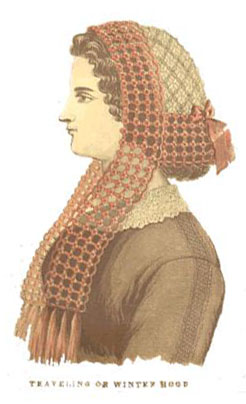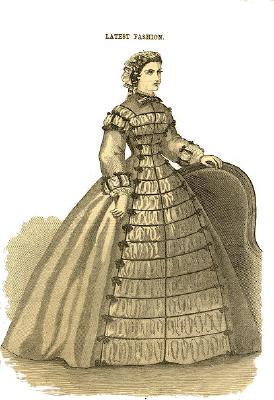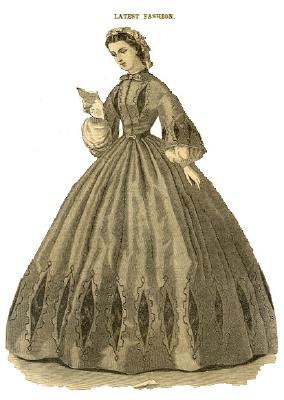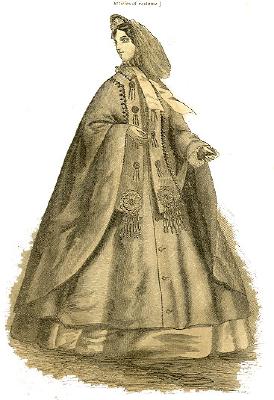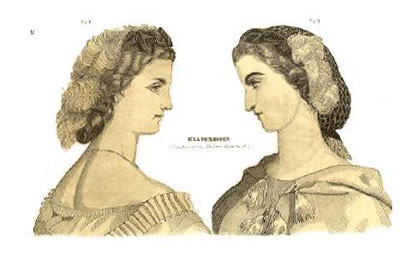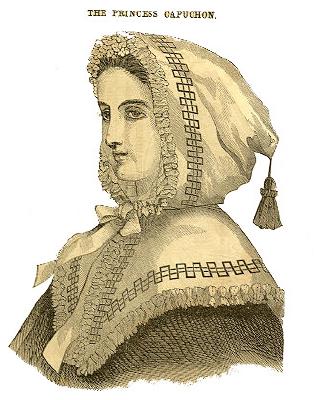Materials required to make one hood: An ounce and a half of single white Berlin wool; two ounces of a very bright shade of Alpine rose; half an ounce of single Partridge wool; six skeins of white sewing silk; half a yard of Alpine rose ribbon for the bow behind; a d'oyley frame, with brass pegs, twelve inches square, and one four inches wide and twelve inches long.
This pretty hood, which is so useful for travelling wear, or for putting on in coming out of a theatre or place of public amusement, is made in the same manner as the daisy d'oyleys which used to be so much in vogue.
The hood has a white and speckled head-piece, bordered all round with a bright rose-colored border, with strings of the same. The head-pieces is not cut after it is removed from the pegs of the frame; but the border and strings have half the wool cut in the same manner as the daisy mats, to give it a fluffy, soft appearance.
The wool is wound on a frame, and each square is secured by a cross-stitch in wool. The head-piece consists of a simple square, the wool being wound crosswise on the frame, from the corner to corner, so that, when finished, the diamonds lie in the proper direction.
Four rows of white wool must be wound round every other peg, and over this three rows of white sewing silk; the other pegs require two rows of white wool and two of Partridge wool.
When all the wool is wound, the squares must be secured with white wool, threaded in a long netting-needle, slipping the wool on the wrong side to form a square underneath; or, to explain ourselves better, securing the squares the straight way of the frame.
When this square is completed the head-piece is finished, and the border must be commenced on the long, narrow frame.
The front border and strings are made in one piece; and, as the frame is not long enough, it must be accomplished by four separate windings. Take seven skeins of the rose-colored wool, fold each skein into five lengths, fasten each skein on to the pegs of the long side, winding the wool that is to be continued, round the opposite pegs, to keep it secure. To form the squares, loop two pieces of wool in and out the short way of the frame, and over that three pieces.
It will now be seen that the squares are formed, which must be secured with the same colored wool; and when this portion of the work is completed, three of the threads cut on each side of the stitch, to form a little tuft, or daisy.
When removed from the frame, the border is finished by the loops on each side, which make a pretty edging to the strings. Three more lenghts of border must be done in the same manner, untill the wool is used up.
Half the quantity of boder is sufficient for the hood behind. The border must now be sewn on in front, holding in the cap a little at the top, to give it a round appearance. After it is sewn on behind, a piece of plaited Partridge wool should be run in between the stitches on the wrong side, so that the hood may be drawn in to the required size.
In the colored illustration of this hood, our readers will see that the boder is composed of four windings of wool only. The reason for this is that, if there had been seven rows shown, the character of the work would not have ben so easily seen, on account of its minuteness.
(With many thanks to Kat, aka Jersey_Lightning, from the Civil War Reenactors Discussion Forum for providing me with the instructions missing from my copy of the magazine!)
